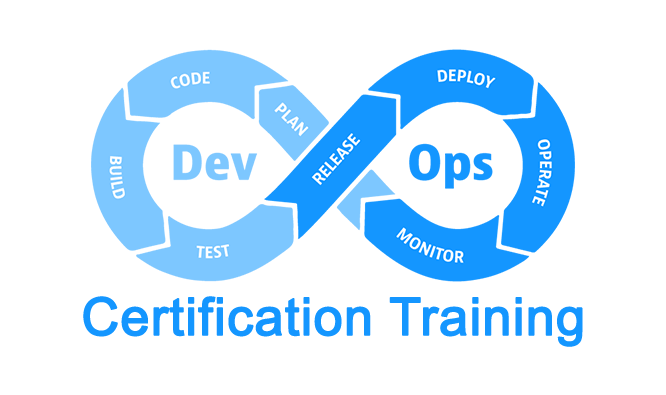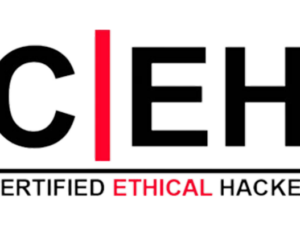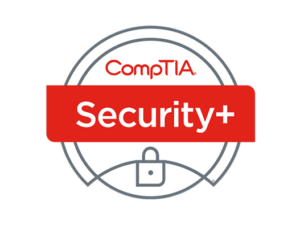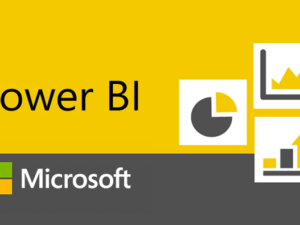DevOps improves collaboration and productivity by automating infrastructure and workflows and continuously measuring applications performance. In this course you will learn about Version Controlling, Code Automation, Continuous Integration, Continuous Deployment, Configuration Management, and Monitoring of application.
DevOps Certification Training
- Description
- Curriculum
- FAQ
- Reviews

- Software Tester
- System Admin
- Solution Architect
- Security Engineer
- Application Developers
- Integration Specialist
After completing this Devops Certification Training, you should be able to:
- Manage and keep a track of different versions of the source code using Git
- Build and Automate Test using Jenkins and Maven
- Automate testing of web elements using Selenium suite of tools
- Build and Deploy containerization using Docker
- Learn different roles and Command Line usage of Ansible
- Manage clustering and scaling with Kubernetes
- Perform Continuous Monitoring using Nagios
- Gain experience of working on an industry standard live Project
- Any Scripting Language Knowledge
- Linux Fundamentals
- Python Scripting
- Linux Fundamentals
-
1Overview of DevOps
Learning Objective: In this module you will be introduced to the DevOps environment.
Topics:
- Why DevOps?
- What is DevOps?
- DevOps Market Trends
- DevOps Engineer Skills
- DevOps Delivery Pipeline
- DevOps Ecosystem
-
2Version Control with Git
Learning Objective: In this module, you will gain the insights of the functionalities and version controlling using Git.
Topics:
- What is version control?
- What is Git?
- Why Git for your organization?
- Install Git
- Common commands in Git
- Working with Remote Repositories
Hands On:
- GIT Installation, Version Control, Working with remote repository
-
3Git, Jenkins
Learning Objective: In this module, you will learn about the different actions performed through Git and will be introduced to Jenkins and Maven.
Topics:
- Branching and Merging in Git
- Git workflows
- Git cheat sheet
- What is CI?
- Why CI is Required?
- Introduction to Jenkins (With Architecture)
- Introduction to Maven
Hands On:
- Branching and merging, Stashing, rebasing, reverting and resetting
- Build and automation of Test using Jenkins and Maven
-
4Continuous Integration using Jenkins
Learning Objective: In this module, you will learn how to perform Continuous Integration using Jenkins by building and automating test cases using Maven.
Topics:
- Jenkins Management
- Adding a slave node to Jenkins
- Building Delivery Pipeline
- Pipeline as a Code
- Implementation of Jenkins in the Certs Learning Project
Hands On:
- Build the pipeline of jobs using Jenkins
- Create a pipeline script to deploy an application over the tomcat server
-
5Continuous Testing with Selenium
Learning Objective: In this module, you will learn about Selenium and how to automate your test cases for testing web elements. You will also get introduced to X-Path, TestNG and integrate Selenium with Jenkins.
Topics:
- Introduction to Selenium
- Why Selenium?
- Selenium – Webdriver
- Creating Test Cases in Selenium WebDriver (Waits)
- What and why X-Path?
- Handling different controls on Webpage
- Framework in Selenium
- Selenium Integration with Jenkins
- Implementation of Selenium in the Certs Learning Project
Hands On:
- Installing Selenium
- Creating Test Cases in Selenium WebDriver
- Integrating Selenium with Jenkins
-
6Continuous Deployment: Containerization with Docker
Learning Objective: This module introduces Docker to learners, the core concepts and technology behind Docker. Learn in detail about container and various operations performed on it.
Topics:
- Shipping Transportation Challenges
- Introducing Docker
- Understanding images and containers
- Running Hello World in Docker
- Introduction to Container
- Container Life Cycle
- Sharing and Copying
- Base Image
- Docker File
- Working with containers
- Publishing Image on Docker Hub
Hands On:
- Create and Implement Docker images and containers
-
7Containerization with Docker: Ecosystem and Networking
Learning Objective: In this module, you will learn to integrate different containers using Docker.
Topics:
- Introduction to Docker Ecosystem
- Docker Compose
- Docker Swarm
- Managing Containers
- Running Containers
- Introduction to Docker Networking
- Network Types
- Docker Container Networking
- Implementation of Docker in the Edureka Project
Hands On:
- Use Docker Compose to create a WordPress site
- Start Containers on a Cluster with Docker Swarm
- Deploy a multi-tier application over a cluster
- Scale an application
-
8Continuous Deployment: Configuration Management with Puppet
Learning Objective: In this module, you will learn to install and configure Puppet. Additionally, understand the master-agent architecture in Puppet.
Topics:
- Introduction to Puppet
- Puppet Installation
- Puppet Configuration
- Puppet Master and Agent Setup
- Puppet Module
- Node Classification
- Puppet Environment
- Puppet Classes
- Automation & Reporting
Hands On:
- Install and configure Puppet
- Configure and implement servers using Puppet
-
9Configuration Management with Ansible
Learning Objective: In this module, you will learn to install Ansible and configure Ansible roles. You will also learn to write playbooks and finally execute ad-commands using Ansible.
Topics:
- Introduction to Ansible
- Ansible Installation
- Configuring Ansible Roles
- Write Playbooks
- Executing adhoc command
Hands On:
- Installing Ansible
- Configuring Ansible Role
- Writing Playbooks
- Executing adhoc commands
-
10Containerization using Kubernetes
Learning Objective: In this module, you will learn the basics of Kubernetes and its integration with Docker.
Topics:
- Revisiting Kubernetes Cluster Architecture
- Spinning up a Kubernetes Cluster on Ubuntu VMs
- Exploring your Cluster
- Understanding YAML
- Creating a Deployment in Kubernetes using YAML
- Creating a Service in Kubernetes
- Installing Kubernetes Dashboard
- Deploying an App using Dashboard
- Using Rolling Updates in Kubernetes
- Containers and Container Orchestration
- Introduction to Kubernetes
Hands On:
- Setting up the Kubernetes Cluster
- Accessing your application through service
- Deploying an app through Kubernetes Dashboard
- Rolling updates in Kubernetes
-
11Continuous Monitoring with Nagios
Learning Objective: Learn how to continuously monitor your tasks using various plugins and implementing Nagios Commands.
Topics:
- Introduction to Continuous Monitoring
- Introduction to Nagios
- Installing Nagios
- Nagios Plugins(NRPE) and Objects
- Nagios Commands and Notification
Hands On:
- Installing Nagios
- Monitoring of different servers using Nagios
-
12Introduction to DevOps on Cloud
Learning Objective: Learn about various cloud services and service providers and get an idea of how to implement DevOps using AWS.
Topics:
- Why Cloud?
- Introduction to Cloud Computing
- Why DevOps on Cloud?
- Introduction to AWS
- Various AWS services
- DevOps using AWS
Windows: Windows XP SP3 or higher
Mac: OSX 10.6 or higher
Internet speed: Preferably 2 Mbps or higher
Headset, speakers and microphone: You’ll need headphones or speakers to hear instruction clearly, as well as a microphone to talk to others. You can use a headset with a built-in microphone, or separate speakers and a microphone.







